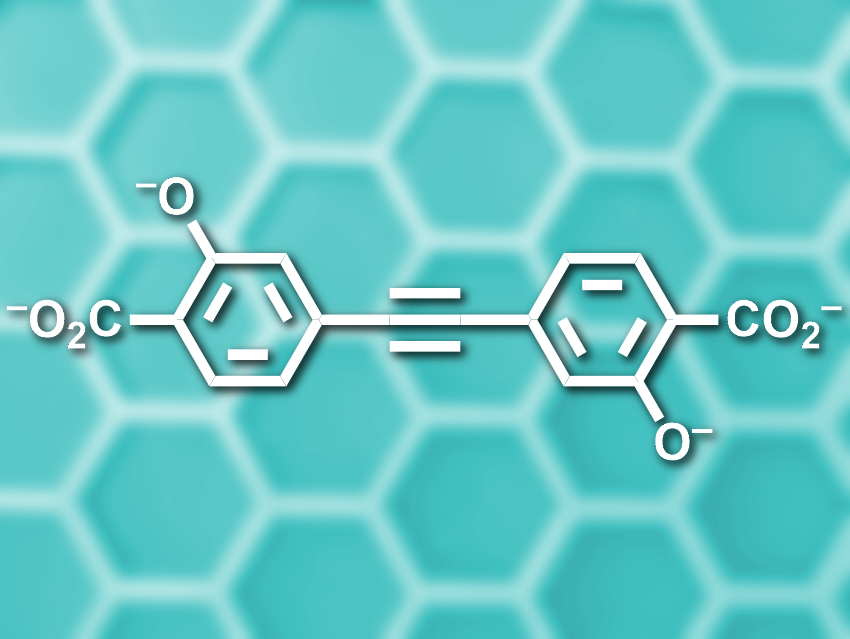Metal–organic frameworks (MOFs) are crystalline, porous materials composed of metal centers and organic linkers. They have applications, for example, in catalysis. MOFs with both acidic and basic sites can, e.g, promote cycloaddition reactions of CO2 and epoxides to form cyclic carbonates. This type of reaction uses CO2 as an environmentally friendly feedstock.
Phuong T. K. Nguyen, Vietnam National University, Ho Chi Minh City, and colleagues have synthesized a series of isostructural MOFs of the type M2(EDOB) (M = Mg, Ni, Co, Zn, Cu, Fe, EDOB4– = 4,4′-(ethyne-1,2-diyl)bis(2-oxidobenzoate, pictured), called M-MOF-184, which can be used to catalyze the chemical fixation of CO2. The MOFs were prepared from metal nitrates and H4EDOB via solvothermal reactions. The crystal structures were obtained using powder X-ray diffraction.
The MOFs have highly porous structures with hexagonal channels. The metal centers act as Lewis-acidic sites and the anionic ligands act as basic sites. Zn-MOF-184 showed the best catalytic activity for the cycloaddition of CO2 and epoxides under mild conditions, achieving high yields and good selectivity for the desired carbonates. According to the researchers, the work could be a basis for the further development of MOFs that catalyze cycloaddition reactions with CO2.
- Series of M-MOF-184 (M = Mg, Co, Ni, Zn, Cu, Fe) Metal–Organic Frameworks for Catalysis Cycloaddition of CO2,
Y. B. N. Tran, Phuong T. K. Nguyen, Quang T. Luong, Khoi D. Nguyen,
Inorg. Chem. 2020.
https://doi.org/10.1021/acs.inorgchem.0c02807



